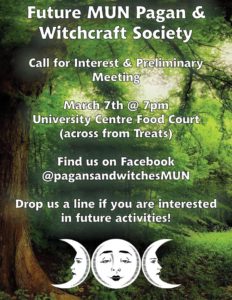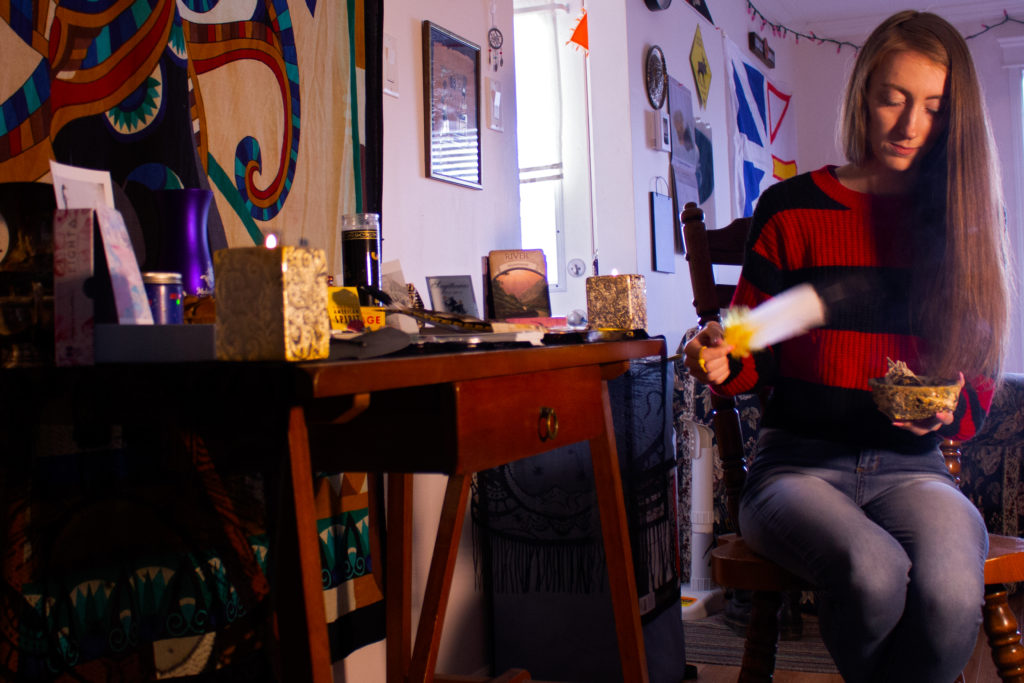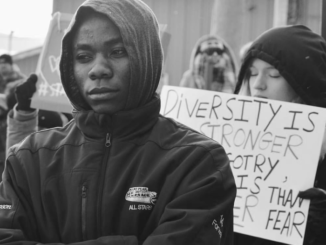Two pagan witches sort of promised they wouldn’t put a spell on us, maybe.
Andrew Waterman
Kicker
A stranger approaches Jay Chapman and Kelly Young as they make room for their poster on the wall of a busy food court.
“Oh, what’s this?” the stranger asks.

The three launch into a coded conversation lasting less than 30 seconds before the stranger casually moves on. A lot of information was transferred in the short exchange, but it takes twice as long to explain to an outsider.
As it turns out, the stranger knows some practising Norse Pagans, which Chapman happens to be as well.
“But not ‘folkist?'” the stranger asks.
“Of course not,” Chapman replies. “Racists can get the F out of here.”
“Folkist” means Nazi in the pagan community, Chapman explains. And in the world of pagans and witches, particularly Norse Pagans, the community has an unfortunate history of attracting Nazis.
“There’s a focus on ancestry in general in paganism, which lends itself to the growth of white supremacism,” Chapman said.

“We have to go out of our way because it would be irresponsible not to. [We have] to say these people are not welcome, I do not stand with them, they are not welcome in our community,” Chapman said.
Young says spontaneous conversations like these are not out of the ordinary for the pagan and witchcraft community.
While sitting in class last week, one of Young’s classmates mused aloud, “Is it just me, or does every girl go through this phase where she’s into spells and stuff?”
“I turned around and, not only me, but two other girls were like, ‘Actually, we’re still in that phase right now,'” Young said.
Earth-based religions
While paganism and witchcraft are different, Chapman and Young say they both can be described as earth-based religions or spiritualities. Because of this, they often go hand in hand.
Individual practitioners tend to make their own path, taking what is best suited to them and leaving what is not.
They say practising witchcraft is best described as the art of changing consciousness at will. This includes raising energy to cause or influence change in the world or in your life.

“For me, personally, I really incorporate my Indigenous background,” Young says. “A lot of that overlaps with an earth-based belief system [or] spirituality and acknowledging your environment.
“For an example [of] raising energy, that could be a drum circle, or a similar type of ritual, where you group with people to gather energy,” Young said. “Whether you’re making change in the world or just being there for one another and creating a sense of community.”
Both Chapman and Young were raised as Catholics but felt uneasy about their place within the Christian faith.
For Chapman, a transgender bisexual, it was hard to make that fit.
“I tried, I really tried, but it just wasn’t working,” Chapman said.
Their preliminary meeting was successful in tempting five new people out of the “broom closet,” something Chapman says can be difficult because, unlike other religions, paganism and witchcraft aren’t mainstream.
“That’s part of the reason Kelly and I are doing this. We’re hoping to find those people and lure them out of the shadows.”




Be the first to comment